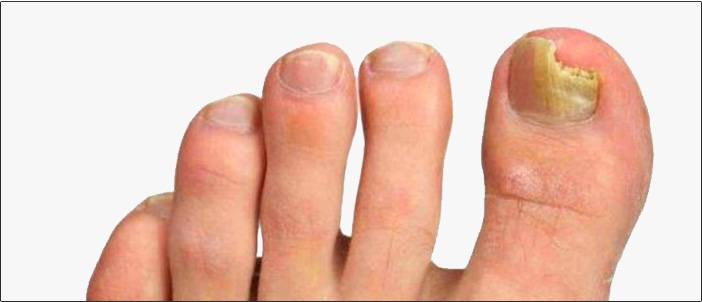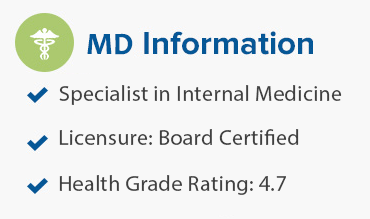Beginning Symptoms
Although easier said than done, catching nail fungus earlier on is advantageous. Remember, nail fungus didn’t occur overnight and it won’t disappear overnight either. Be on the lookout for the following:
 Fungus thickens with growth under the nail bed but not yet raising the nail.
Fungus thickens with growth under the nail bed but not yet raising the nail.
 Discoloration of nail – white streaks, black dots, yellowing, green or purple tint.
Discoloration of nail – white streaks, black dots, yellowing, green or purple tint.
 Early Stage
Early Stage
Escalated Symptoms
As the nail fungus begins to grow under the nail bed and spread you’ll notice visible changes to the nails shape and texture. Some escalated nail fungus symptoms include:
 Crumbling, flaking, and increased brittleness.
Crumbling, flaking, and increased brittleness.
 Irregularities in texture and shape.
Irregularities in texture and shape.
 Escalation
Escalation
Final Symptoms
If left alone, it becomes more difficult to deal and may increase drastically. As the nail thickens the ability to reach the nail bed where the fungus grows and spreads becomes a much more involved process involving filing of the nail bed and trimming excess nail with clippers prior to applying a topical product. New symptoms arise including:
 Extremely thick nail bed may result in breakage.
Extremely thick nail bed may result in breakage.
 Onycholysis (nail completely separates from bed of toe).
Onycholysis (nail completely separates from bed of toe).
 In some circumstances symptoms like inflammation, pain, separation, and irritation may occur. If any irritation or discomfort you should consult with a medical doctor for their professional opinion.
In some circumstances symptoms like inflammation, pain, separation, and irritation may occur. If any irritation or discomfort you should consult with a medical doctor for their professional opinion.
 Rarely, nail fungus can spread to adjacent nails. Always thoroughly sanitize nail utensils before uses and between uses of infected and uninfected nails./span>
Rarely, nail fungus can spread to adjacent nails. Always thoroughly sanitize nail utensils before uses and between uses of infected and uninfected nails./span>
 Final
Final
 It’s important that you consult with a doctor for their professional opinion if you think you may have nail fungus. Although commonly self diagnosed, it’s likely that if you are not seeing results you may have another condition that is not responsive to antifungals.source: https://www.ncbi.nlm.nih.gov/pubmedhealth/PMHT0024766/
It’s important that you consult with a doctor for their professional opinion if you think you may have nail fungus. Although commonly self diagnosed, it’s likely that if you are not seeing results you may have another condition that is not responsive to antifungals.source: https://www.ncbi.nlm.nih.gov/pubmedhealth/PMHT0024766/








 Loading ...
Loading ...








